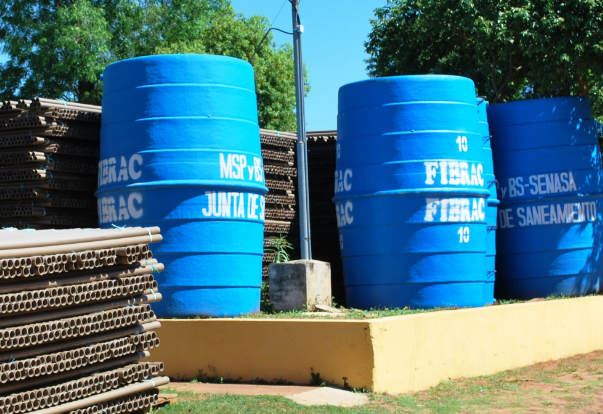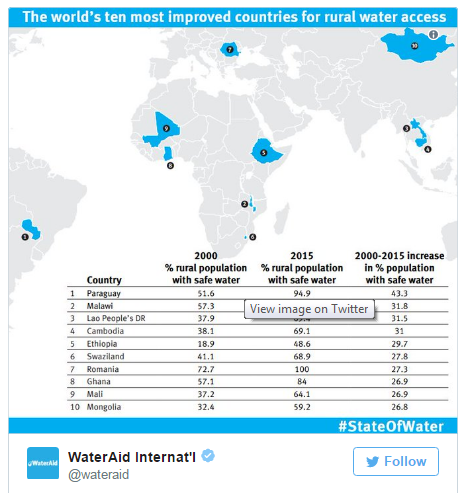Rural Water Access: Why Should Countries Follow Paraguay’s Lead?
Published on by Sean Furey, Water & Sanitation Specialist at Skat Consulting in Government
With more than 94% of the rural population accessing safe water, nations across Latin America and beyond can learn from Paraguay’s phenomenal success.

In the small community of Juan Augusto Saldívar, about an hour outside of Paraguay’s capital, Julian Marecos is president of the local water board. He volunteers with four others to supervise the community’s water service, which was founded in 1993 and supplies more than 3,800 users, including the school, health centre, church, and other people in neighbouring areas.
Born and raised in the area, Marecos still remembers the difficulties endured to access drinking water. “Traditionally, families used to get water from wells they had in their homes but often, particularly during very hot seasons, these wells dried up,” he says. “Thanks to the board, we no longer have these difficulties and we have available drinking water, which helps us avoid many diseases.”
Across Latin America, 30 million people don’t have access to safe water while 100 million still lack access to sanitation. This is despite the region being home to a third of the world’s freshwater resources. The issue was given priority in the millennium development goals (MDGs), which gave a target of halving, by 2015, the proportion of the population without sustainable access to safe drinking water and basic sanitation.
Only one country managed this in rural areas: Paraguay. In fact, it overachieved the goal; more than 94% of its rural population now has access to safe water, compared with 51.6% in 2000, making more progress than any other country.

Achieving clean water and sanitation has been given even greater prominence in the new sustainable development goals. Countries must ensure availability and sustainable management of water and sanitation for everyone, and experts have claimed that without this progress other goals and targets cannot be achieved. So what can other Latin American countries learn from Paraguay’s success?
Water as a public health priority
One way Paraguay tackled the problem of water access in rural areas was by placing its sanitation and water agency – Senasa (Servicio Nacional de Saneamiento Ambiental) within the department of health, helping to ensure its treatment as a public health priority.
“While there are still many challenges, there really has been a lot of progress in the last 25 years or so because of the way Paraguay set things up,” says Germán Sturzenegger, a senior water and sanitation specialist at the Inter-American Development bank (IDB).
In rural communities, the model works by giving responsibility for water and sanitation to a board – known as Juntas de Saneamiento – which is run by volunteers. There are upwards of 2,500 of these community associations in rural areas and small communities on the urban peripheries across Paraguay, one of the first countries to promote this kind of model.
The boards not only recover the maintenance and operating costs through setting water tariffs, but also repay a portion of the capital costs – used to build the infrastructure initially – to the national treasury. A rural family pays $3-5 per month for its water service, which is typically paid in cash to members of the board.
“The Paraguayan government, mostly through Senasa, has created a good method for working with small communities, creating the boards and training them to operate, maintain and run the system at an administration level,” Sturzenegger says. “They continue to get technical assistance, which isn’t always the case in other countries. This model is one of the reasons why the system as a whole has been sustainable.”
This service management model was first promoted and financed with an initial $6m loan from the World Bank in 1977. In the past 20 years, the bank, the IDB and the Spanish government have been helping to scale it up. The IDB has invested $64m and the Spanish government $60m since 2009 through the Spanish Water Fund. Overall the World Bank has provided $150m in loans to Paraguay for water projects since 1977.
Read more: The Guardian
Media
Taxonomy
- Water Access
- Rural Water Supply & Sanitation
- Sanitation
- Access
- Water & Sanitation
- Sanitation & Hygiene
- Rural Area Water Supply
- Water Management
- Rural Development
- Water Sanitation & Hygiene (WASH)